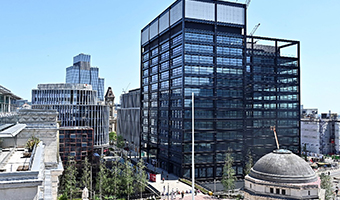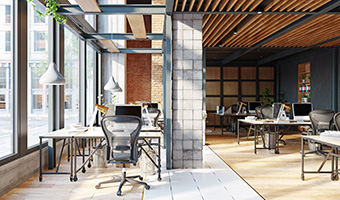It was written just as prominent Northern Ireland shopping centres Forestside and Foyleside were purchased by new owners and my view at the time was that the deals signalled these types of assets were coming back into favour with investors as there was an acknowledgement that values had bottomed out for prime shopping centre assets.
Fast forward to today and it’s clear to see the trend arguably started by those acquisitions has continued. LSH’s Investment Transactions Northern Ireland report for the first half of the year recorded investment volumes of £131.1m, more than the value of deals for the whole of 2024. This jump was driven by £88.9m of retail investment in the first six months of this year, a figure 34% above the five-year average and headlined by the Herbert Group’s £58.8m acquisition of Abbeycentre from NewRiver REIT – the largest retail transaction since 2017. Since then, Erneside in Enniskillen has also hit the market.
However, the sector hasn’t always been this healthy. While shopping centres were prize assets for all types of investors in the early 2000s, the global financial crisis of 2008 saw values and liquidity of even the most high-profile of assets drop sharply, sparking panicked and forced sell offs. This coincided with a high number of retailer insolvencies and the structural change created through the growth of ecommerce and online shopping.
A new buyer pool emerged and assets traded at significantly discounted prices, which fell further in many instances post-pandemic, in the rising interest rate environment resulting in a number of investors deciding to sell their shopping centre assets.
The rebased values and attractive returns resulted in renewed interest from local investors and in just 24 months we’ve seen indigenous buyers purchasing Forestside in Belfast, Abbeycentre in Newtownabbey, Rushmere in Craigavon, Bloomfield in Bangor, Fairhill in Ballymena and Foyleside in Derry/Londonderry.
It appears that in 2025 shopping centres are still in demand and investors – including local buyers - remain ready to deploy capital for good quality assets with strong fundamentals, which are fairly priced. With some shopping centres coming to the market at a fraction of their historic value, investors have been able to inject more equity and take on less debt, thereby reducing loan-to-value exposure and risk.
There is also an understanding that even with a strong retail offering, shopping centre owners are having to work hard to drive footfall to their schemes whilst competing with the well-established and convenient online experience.
The new owners of some of NI’s flagship shopping centres are investing heavily in the assets – for example the development of new food outlets in Lesley Forestside, Herbert Group pledging major expansion plans in Lesley Bloomfield, a multi-million-pound refurbishment at Fairhill ahead of Primark opening later this year and many other schemes introducing entertainment and leisure activities to attract footfall.
This trend has been driven by attractive returns which are at a level where it makes sense for local investors with healthy cashflow to invest in the assets. In terms of where the market goes next, the activity of the past few years means there are not too many of Northern Ireland’s prime shopping centre assets left to change hands.
Of course, many shopping centres across the UK didn’t survive the storm and have made way for mixed-use or residential developments. In the same period of time, we saw a rise in demand for retail parks.
The relative stability of the shopping centre market is undoubtedly a good thing for the overall retail landscape in Northern Ireland at a time when consumer confidence remains fragile and rising costs have put a squeeze on discretionary spending.
From a retailer’s perspective, shopping centres have in many cases held up better than the high street in provincial towns and brands have more confidence going into a thriving scheme with other recognisable names around them. In the past year we’ve seen Lego, Astrid & Miyu and Crew Clothing open in Victoria Square, Popeyes open its then first NI outlet in Forestside, Vanilla opening in Castle Court and Rituals expanding into Erneside and Buttercrane. There have been notable success stories on the high street too of course, particularly in Belfast, but there’s no doubt shopping centres still offer a degree of comfort for brands.
Footfall figures at the major schemes in Northern Ireland have held up comparatively well with overall UK figures, similarly suggesting people here are still interested in shopping in real life (the queues at the Lego Store at the end of August were proof of that).
The challenge, which local owners are relishing, is to continue improving and enhancing their assets through proactive asset management to give shoppers reasons to keep coming back to their centres on a regular basis. Within our own Belfast office, we have an extensive shopping centre portfolio and our ongoing mandates give us confidence that they will continue to deliver.
Get in touch

Email me direct
To:
REGISTER FOR UPDATES
Get the latest insight, event invites and commercial properties by email







